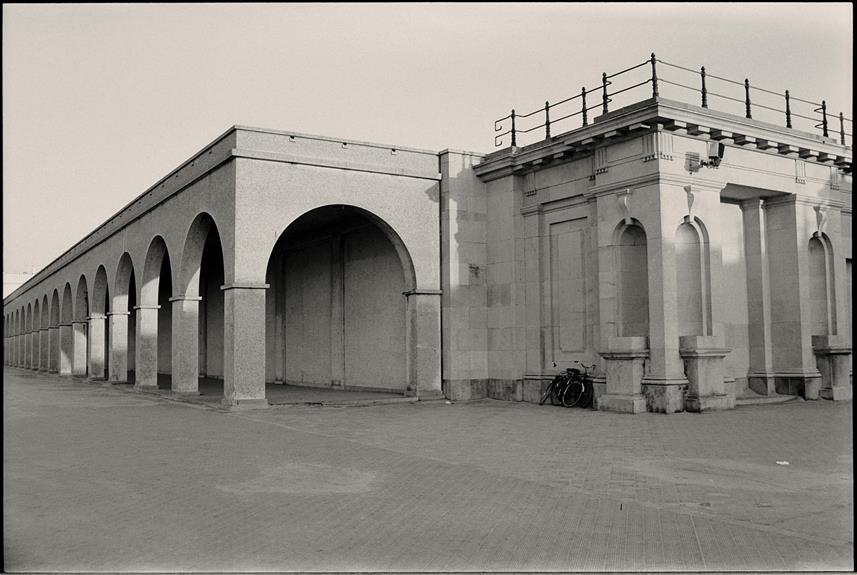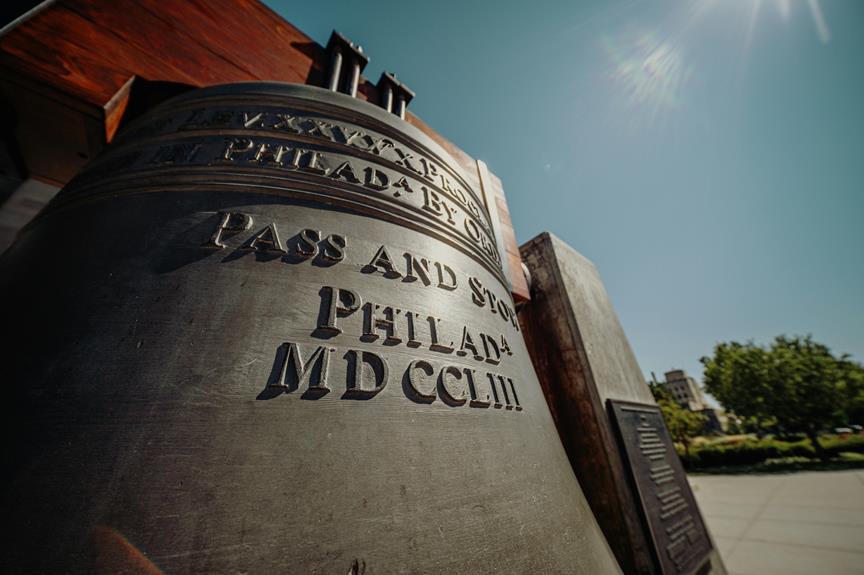Nestled in the heart of Belgium, the In Flanders Fields Museum serves as a somber reminder of the immense sacrifices made during World War I. Its thoughtfully curated exhibits and immersive experiences offer visitors a unique opportunity to explore the complexities of war and its enduring impact on society. As visitors traverse through its halls, they are confronted with the personal stories of those who lived through the Great War, providing a profound connection to history that lingers long after leaving the museum. This institution stands as a powerful affirmation to the resilience of the human spirit in the face of adversity.
Key Takeaways
- Tribute to World War I sacrifices
- Blends historical and modern architecture
- Multimedia exhibits with war artifacts
- Engages visitors with interactive displays
- Shares personal stories from the war
History and Significance
The history and significance of the Flanders Fields Museum in Belgium can be traced back to its inception during the aftermath of World War I. Established in 1928, the museum stands as a poignant reminder of the sacrifices made during the war, particularly in the Flanders region. Its importance lies in its role as a place of remembrance, honoring the soldiers who fought and perished in the battlefields of World War I.
The museum serves as a tribute to the devastating effects of war, showcasing artifacts, photographs, and personal belongings of those who experienced the conflict firsthand. Through its exhibitions and educational programs, the Flanders Fields Museum aims to preserve the memory of those who lost their lives and to educate future generations about the horrors of war.
Architecture and Design
Amidst the solemn grounds of the Flanders Fields Museum in Belgium, the architecture and design speak volumes about the museum's commitment to honoring the legacy of World War I. The museum's architecture seamlessly blends historical elements with modern influences, creating a space that is both reflective and innovative.
The exterior of the museum features a sleek, contemporary design that contrasts with the surrounding landscape, symbolizing the passage of time and the enduring impact of the war.
Upon entering the museum, visitors are greeted by a striking interior that combines artistic details with functional design. The use of natural light, minimalist decor, and interactive displays creates an immersive experience that draws visitors into the stories of those who lived through the war. The artistic details incorporated into the museum's design, such as sculptures, paintings, and multimedia installations, serve to deepen the emotional impact of the exhibits and evoke a sense of remembrance and reverence.
Galleries and Exhibits
Nestled within the Flanders Fields Museum in Belgium are a series of carefully crafted galleries and exhibits that offer a thorough exploration of the impact of World War I. The museum houses a diverse range of displays, including artistic interpretations and war artifacts that provide visitors with a multifaceted understanding of the Great War.
One of the highlights of the galleries is the collection of artistic interpretations of World War I. These pieces include paintings, sculptures, and other artworks created during or inspired by the war. These artistic expressions offer a unique insight into the emotions, struggles, and experiences of individuals affected by the conflict.
In addition to the artistic displays, the museum features a wealth of war artifacts that bring the history of World War I to life. From weapons and uniforms to personal belongings and battlefield relics, these artifacts provide a tangible connection to the past, allowing visitors to gain a deeper appreciation of the realities of war.
Complementing the traditional exhibits are multimedia installations and educational displays that enhance the visitor experience. These interactive elements employ cutting-edge technology to present historical information in engaging and immersive ways, making the museum a dynamic and educational space for individuals of all ages.
Interactive Experiences
Within the Flanders Fields Museum in Belgium, visitors can engage with a variety of interactive experiences that foster a deeper understanding of the historical significance of World War I. The museum has embraced technology integration to offer immersive displays that bring the wartime experiences to life in a vivid and impactful manner.
One of the standout interactive experiences is the use of multimedia presentations that combine archival footage, photographs, and audio recordings to create a compelling narrative of the events that unfolded during World War I. Through these immersive displays, visitors can gain a firsthand glimpse into the realities faced by soldiers and civilians during this tumultuous period in history.
Furthermore, the museum utilizes interactive touchscreens and digital interfaces to allow visitors to explore specific aspects of the war in more detail. This hands-on approach enables individuals to investigate further into topics of interest, such as key battles, wartime strategies, and personal stories of those affected by the conflict.
Personal Stories Shared
The Flanders Fields Museum in Belgium intricately weaves together personal narratives to illuminate the human experiences that unfolded during World War I. Through the sharing of personal stories, visitors to the museum can establish emotional connections with the individuals who lived through the war, gaining unique perspectives on the impact of conflict on both soldiers and civilians.
These personal narratives offer a glimpse into the lives of those who experienced the war firsthand, providing a more in-depth understanding of the challenges, sacrifices, and resilience displayed during that tumultuous period. By highlighting individual stories, the museum humanizes the historical events, making them more relatable and engaging for visitors.
The diverse range of personal accounts showcased in the museum allows for a thorough exploration of the different roles people played during the war, from soldiers on the front lines to nurses caring for the wounded. Each story contributes to a mosaic of experiences that collectively depict the multifaceted nature of World War I.
Furthermore, by presenting these personal stories in various formats such as letters, diaries, and interviews, the museum offers visitors a multi-dimensional perspective on the war, enhancing their overall experience and fostering a deeper appreciation for the individuals who lived through those challenging times. Through these emotional connections and unique perspectives, the Flanders Fields Museum brings history to life, ensuring that the human aspect of war is not forgotten.
Impact on Visitors
Upon engaging with the personal narratives at the Flanders Fields Museum in Belgium, visitors undergo a profound and introspective examination of the lasting impact of World War I on both a historical and emotional level. The museum's ability to evoke an emotional connection with its exhibits is a tribute to its power as an educational experience. Through the carefully curated displays, visitors are transported back in time to witness the harsh realities faced by soldiers and civilians during the war.
The emotional weight of the museum experience is palpable as visitors encounter firsthand accounts of sacrifice, loss, and resilience. The personal stories shared within the museum walls serve as a poignant reminder of the human cost of war, prompting reflection on the significance of remembrance and the importance of learning from the past.
As visitors navigate through the exhibits, they are confronted with a mix of artifacts, photographs, and interactive displays that bring history to life. This immersive approach not only enhances the educational experience but also fosters a deeper understanding of the complexities surrounding World War I. By engaging with the material on display, visitors gain a renewed appreciation for the sacrifices made and the enduring impact of the war on subsequent generations. The Flanders Fields Museum leaves an indelible mark on its visitors, challenging them to confront difficult truths and inspiring a commitment to peace and remembrance.
Tips for Visiting
For an ideal and enriching experience at the Flanders Fields Museum in Belgium, visitors are recommended to plan their visit strategically to make the most of the museum's offerings. Understanding visitor etiquette is crucial to guarantee a respectful and enjoyable visit. It is important to maintain a quiet and contemplative demeanor while exploring the museum, as many visitors come to pay their respects to the fallen soldiers. Silence and a respectful attitude towards the exhibits and other visitors help uphold the solemn atmosphere of the museum.
Moreover, being aware of the cultural context surrounding the exhibits can greatly enhance the visitor's experience. Taking the time to read the provided information and immerse oneself in the stories of the soldiers and civilians affected by the war can provide a deeper understanding of the historical significance of the museum. Engaging with the interactive displays and audiovisual materials can also help bring the past to life and make the visit more engaging.
To fully appreciate the Flanders Fields Museum, visitors should allocate enough time to explore the various exhibitions and reflect on the impact of World War I. Planning the visit during quieter times, such as weekdays or early mornings, can also help avoid crowds and allow for a more intimate experience with the museum's displays. By following these tips and guidelines, visitors can make the most of their visit to the Flanders Fields Museum and gain a deeper appreciation for the history it preserves.
Frequently Asked Questions
Are There Any Special Events or Temporary Exhibitions Held at the Museum?
Upcoming events at museums often include temporary exhibitions that showcase historical artifacts in a dynamic and engaging manner. These exhibitions provide visitors with a unique opportunity to explore specific themes, periods, or collections that may not be on permanent display.
Can Visitors Bring Their Own Food and Drinks to the Museum?
While many museums have strict rules against bringing food and drinks inside, certain establishments offer designated picnic areas for visitors to enjoy their own snacks. However, it is important to respect any restrictions in place and follow proper etiquette when bringing outside food into a museum setting.
Understanding the balance between visitor freedom and preservation of the museum's environment is essential in maintaining a positive experience for all.
Is There a Gift Shop Where Visitors Can Purchase Souvenirs?
Visitors to the museum can explore a dedicated gift shop offering a variety of souvenirs and memorabilia for purchase. This allows individuals the opportunity to take home a tangible piece of their experience and support the museum's mission.
The gift shop provides a space for patrons to browse and select items that resonate with them, enhancing their overall visit and serving as a lasting reminder of their time at the museum.
Are There Any Guided Tours Available for Visitors at the Museum?
Guided tours are a common feature in many museums worldwide. These tours offer visitors a deeper understanding of the museum's architecture, history, and interactive exhibits. By providing expert insights and narratives, guided tours enhance the overall visitor experience.
They often cater to diverse interests and learning styles, making the museum visit more engaging and informative. The inclusion of guided tours is a valuable asset for museums seeking to enrich their visitors' understanding and appreciation of their collections.
Is Photography Allowed Inside the Museum?
Regarding photography rules and museum etiquette, many institutions have varying policies on taking photos inside their premises. It is advisable to check with the staff or refer to any signage for specific guidelines.
Some museums may allow photography for personal use but prohibit flash or tripods to preserve the exhibits. Respect for the artifacts and other visitors is paramount when taking photos inside a museum.
Conclusion
To sum up, the In Flanders Fields Museum in Belgium stands as a powerful tribute to the soldiers who fought and perished in World War I. A remarkable statistic is that the museum attracts over 250,000 visitors annually, highlighting its significance in educating the public about the horrors of war and honoring the sacrifices made by those who served.
The museum's combination of historical artifacts, interactive displays, and personal stories creates a profound and engaging experience for all who visit.


